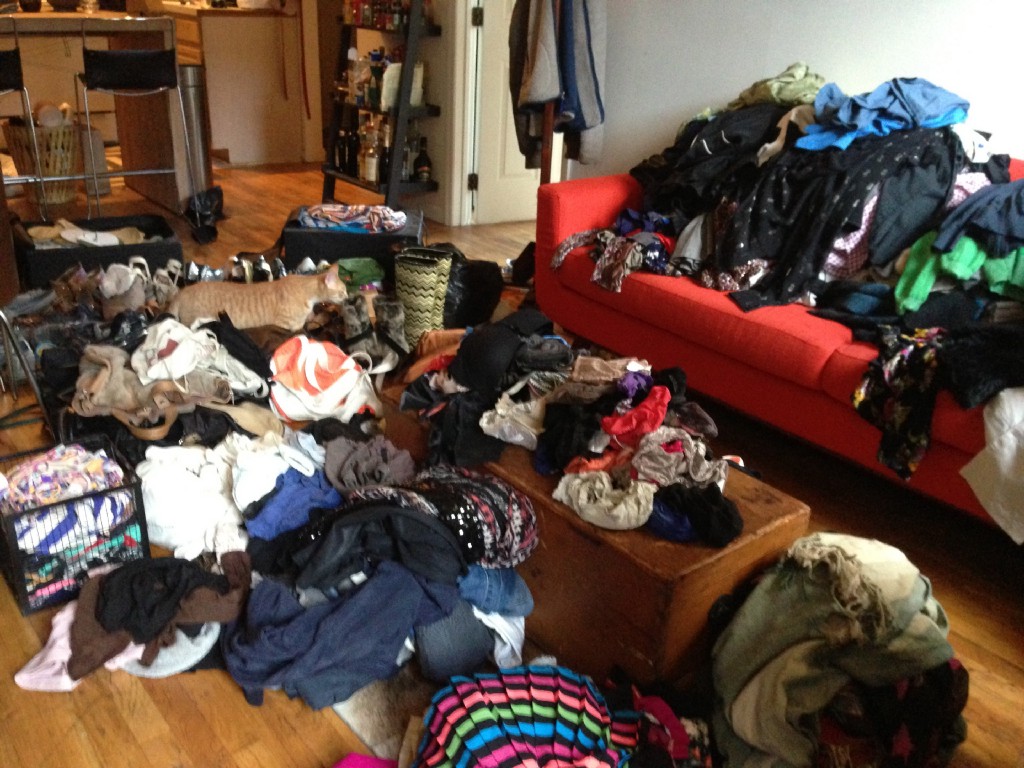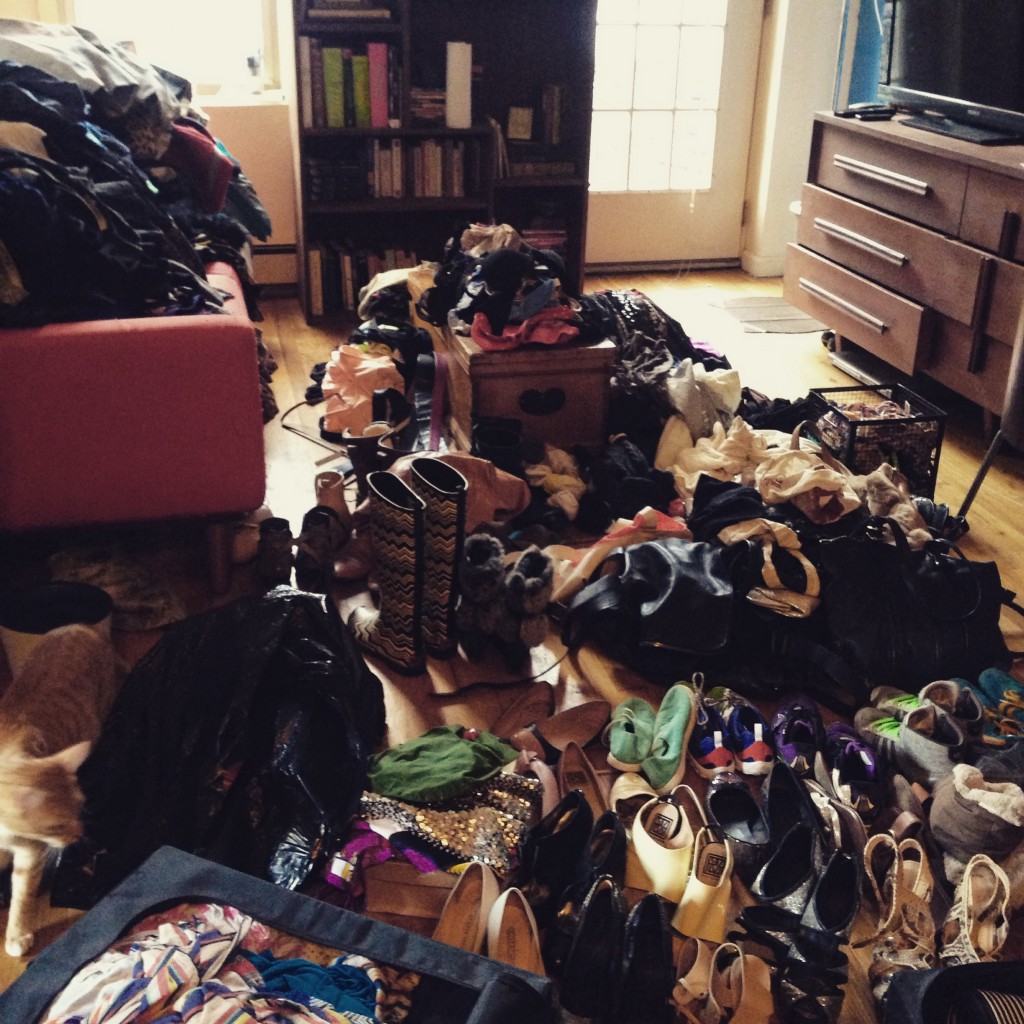The Life-Changing Magic of Money
Inconspicuous consumption and the luxury of having less


The brilliant and bonkers documentary Queen of Versailles was originally meant to chronicle the construction of the most expensive house in America by one of the wealthiest families in the world. Instead, the filmmaker, Lauren Greenfield, had the good luck to capture bad fortune, as the Siegel family hemorrhages money, staff and sense during the 2008 economic crisis. It’s striking how quickly their perfectly manicured mansion goes to literal shit. As they lay off butlers, maids, nannies, chauffeurs and gardeners, their sprawling house begins to resemble one that would be featured on the show “Hoarders:” days-old dishes left to rot, animals neglected, and dog poop everywhere. On a Christmas shopping spree at Walmart, matriarch Jackie Siegel manically throws multiples of toys and bikes into her shopping carts in a way that suggests this may be her one and only opportunity to buy Pop-O-Matic Trouble.
But Jackie was actually a hoarder all along. She pathologically acquired stuff, animals and children, leaning on an army of staff to squirrel the purchases away, feed the kids and clean up the shit. When the vast wealth starts to evaporate, it lays bare her problems and exposes a counterintuitive truth: stuff is a poor-people problem.
With the rare exception of a few owlish intellectuals with too many books, the people featured on “Hoarders” are quite poor. Some are dumpster divers, some haunt thrift stores, some hang on to actual garbage, but very few can afford to hoard flat-screen TVs or designer clothes. The common denominator is usually some form of loss: a death, a layoff, or a disability, compensated for with a hoard of canned goods, dolls or cats. Impoverished and disenfranchised, the subjects of the show don’t have the luxury of editors: hired help to distinguish valuables from trash and stem the tide of stuff.
The catharsis of the show comes less from the simpering psychologists than the maniacally energetic “certified organizers,” who tend to ignore grim origin stories in favor of making hoarders take a hard look at dirty 7-Eleven cups and consider their utility. The organizers and their army of hazmat-suited trash handlers are the ones who clear out all the junk and strategically place framed photos and keepsakes on bare shelves in sparse rooms, reminding the subjects of The Things That Matter. It’s the parting shot of hoarders wiping away tears and marveling at their newfound space that makes me spring into action and vigorously clean out my fridge.
I submit that this is also the hypnotic allure of Marie Kondo, the Japanese tidying pixie extraordinaire. Kondo is the author of the whimsically titled The Life-Changing Magic of Tidying Up: The Japanese Art of Decluttering and Organizing. Every fashion editor who yields to her quiet yet firm approach to tidying breathlessly describes her slight stature and crisp appearance, as if she’s managed to divest herself of slobby qualities in the decluttering process.
You don’t have to buy her book to learn her mantra: the litmus test that guides every organizing decision is, “does this item bring me joy?” If you do spring for the book, you will find a lot of context for this guiding principle that vacillates between the fanciful (“caress your clothes and thank them for their service before you throw them away”) and the hilariously blunt (“if you’re angry at your family, it might be because of your room”).
The first time I heard about it was at a New Year’s party, where someone was rhapsodizing about the transformative power of the KonMari method (the decluttered name for The Japanese Art of Decluttering and Organizing). It turns out that KonMari evangelism is an ongoing part of the purge for most devotees, even though it’s not prescribed by the modest and retiring Kondo herself. One fawning article was all the prompting I needed to click check out on Amazon and add one more piece of stuff to my life in the form of a slim volume called The Life-Changing Magic of Tidying Up.

I’ve been obsessed with getting rid of things for as long as I can remember. The railroad apartment I grew up in deeply influenced my sense of personal space. Each room connected to the next, so my brothers and I picked through my parents’ bedroom to get a snack or go pee, and my parents tiptoed through our rooms to watch TV at night. The first time I had a room with door that closed (instead of two doors that didn’t) was in a college dorm.
As a kid, I pored over the Ikea catalog to think about nifty space-saving ideas and fantasize about replacing all of my parents’ characterful oriental rugs and antique armoires with minimalist Scandinavian alternatives. I would urge my mother to toss the books I had already read, insisting that they were just taking up room on the shelf. I was perpetually frustrated with my friends who let their sprawling rooms fill up with junk, spending sleepovers making them throw things out. The first dream I can remember is of discovering an entire hidden wing of our older, tinier apartment.
One of Kondo’s key commandments is that you have to evaluate all of your belongings at once — there are no half-measures in KonMari. I was itching to get started and immediately pulled everything out of my closet, assuring my roommate at the time that I was already making progress and that this was just a part of the process, like bloating before all the weight melts away.
I surveyed the heap with a critical eye. Coats were spilling over into bathing suits, which were edging up on silk scarves. I didn’t like most of it, which felt like a courageous and authentic insight. I thought of the fashion editors who had submitted to the KonMari method, and considered the fact that they probably made more decisions between two slim cut Isabel Marant blazers than one pilled H&M cardigan and another.
Kondo says you should start with off-season clothes in order to cull pieces you’re less attached to in the moment. Yes, easy, I thought. I’ll start with maxi dresses. The pile was hectic and loud, a riot of competing prints and colors. I picked up the old, tired pieces first, confidently stating that they no longer brought me joy and thanking them for their service. Kondo thinks you should do this out loud, but I figured my clothing’s emotional sensitivity extended to telepathy and said it in my head. The moment the dresses hit the No pile, I felt unburdened, the weight of cotton-poly blends lifted from my shoulders. After assessing every dress, there were three survivors: old faithfuls I could positively pronounce joy-bringers.
Now I only had three dresses, and they weren’t even that great. What about when I needed something for an event? What if I got a better job that demanded a better wardrobe? Why didn’t I have a well-cut black blazer? Clearly, I needed to hang on to some joyless items until I had money to shop. I surreptitiously moved two dresses back into the joy pile. It seemed wise that I hadn’t thanked them for their service aloud just yet.
I applied the joy test to every item I owned, from mascaras to socks to frying pans. As promised, I generated garbage bags full of stuff. I rehung my clothes based on their affinity for each other (it turns out garments like to be among their own) and folded my t-shirts and sweaters in little cinnamon bun swirls like Kondo says. It still didn’t look right.
There were too many colors and prints, and the styles didn’t hang together. It was eclectic, but not in a curated way. I expected the discarded stuff to reveal a kind of hidden logic behind the clothes — a secret system of effortlessly coordinated pieces in complementary tones. I wanted to waltz into my closet in the morning and grab a top and bottom off their hangers, knowing they would inevitably match. Unbelievably, a fashion editor’s wardrobe hadn’t been hiding in my closet all along.
Like juicing, spinning and other rich white lady pastimes, the driving force behind the KonMari method is competitive deprivation. Women who wear eighty-dollar t-shirts and eight-carat diamonds might bristle at bragging about their wealth, but they have no compunction about touting how much stuff they threw away. The real status symbol is not the breadth of your belongings, but the considered curation of them. The less stuff you have, the nicer it is. Vast stockpiles are for people who lack the privilege to purge — minimalism is for people with no losses to counteract, and no hard times to plan for.
It seemed too wasteful to haul garbage bags full of perfectly good clothes onto the curb. I looked up when Goodwill could pick them up — at least a month later. Every day, I maneuvered around the bags when I walked in the front door and dropped my bag on the couch, as Kondo cautions you not to do. More and more, the mass of clothes seemed to have the living, breathing qualities Kondo ascribed to them. They emitted messages like You’re not as decluttered as you thiiiiiiink you are, and you’ll replace us with more disposable Zaaaara clothes.
After about seven weeks of wincing every time I walked by the bags, I called an Uber XL and brought them to Goodwill myself. I exchanged the three bags of clothes for a small slip of paper. Kondo believes that papers are incapable of bringing joy, and are best thrown away entirely when possible. I put it in my wallet, making a mental note to file it in a tax folder when I got home.
Hesper Desloovere Dixon is a writer, strategist and New York native who loves Victorian novels and trash TV.